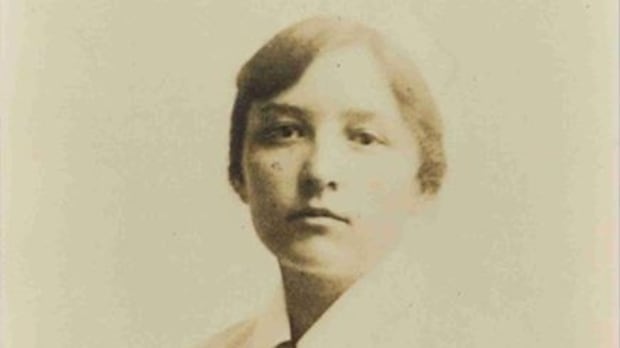IndigenousEdith Anderson Monture, a nurse from Six Nations of the Grand River in Ontario, has garnered yet another accolade nearly 30 years after her death thanks in part to her grandson. Edith Anderson Monture had to attend nursing school in the U.S., graduating in 1914Listen to this articleEstimated 3 minutesEdith Anderson Monture, posing for her graduation photo here, was one of the first First Nations registered nurses in Canada. (Submitted by John Moses)Edith Anderson Monture has garnered yet another accolade nearly 30 years after her death, thanks in part to her grandson. A Kanien’kehá:ka (Mohawk) woman from Six Nations of the Grand River in Ontario, Anderson Monture was recently deemed a person of national historic significance under Parks Canada’s National Program of Historical Commemoration.Anderson Monture, one of the first First Nations women to become a registered nurse in Canada, died at the age of 105 at her home in the community in 1996.Her grandson, John Moses, a member of the Delaware Nation who is Kanien’kehá:ka through his maternal family, said he was thinking of more than just his trailblazer grandmother when he made the nomination to Parks Canada. “My main motivation was hopefully this will serve as an incentive for other young Indigenous people out there who are looking for role models within the health-care professions,” he said.Anderson Monture struggled to be accepted to a Canadian nursing school, which almost exclusively admitted white students. At the time, First Nations people also faced involuntary enfranchisement (loss of Indian status) for pursuing higher education.She moved to the United States to attend nursing school in New York state, and completed her degree in 1914. She then volunteered as a nurse with the U.S. military in the First World War, treating wounded soldiers in France. After the war, she became a midwife and also supported local First Nations voting efforts by hosting a polling station in her home, Moses said. He said he hopes people are able to reflect on the complexity of his grandmother’s achievements. “It’s very gratifying to see that this national designation has occurred but at the same time, we have to be cognizant of all aspects of the story being told,” he said. “It was Canada’s racist policies under the Indian Act of Grandma’s era that obliged her to seek her nurses training [in the U.S.] in the first place.”Anderson Monture received her nurse’s training in New York state. If she had received a diploma in Canada, she would have faced involuntary enfranchisement (loss of Indian status) for pursuing higher education. (Submitted by John Moses)Erin Millions, a non-Indigenous associate professor of history at the University of Winnipeg, co-nominated Anderson Monture.She told Parks Canada that Anderson Monture’s life and work should be remembered as extraordinary and exceptional. “Her exclusion from Canadian nurse training programs, however, highlights the racism and colonial policies that often prevented First Nations students from accessing post-secondary education,” Millions said in a Parks Canada news release. “Monture advocated for many years for First Nations to be recognized as both ‘Indians’ under the Indian Act and Canadian citizens, categories the Canadian government deemed incompatible….”Minister of Canadian Identity and Culture Steven Guilbeault said in a news release that national historic designations “honour our diverse history, and help preserve our collective legacy.””Historic designations play a vital role in preserving Canada’s shared heritage and identity. They ensure that the stories of the people, places, and events that have shaped our nation are remembered, so future generations know who we are and where we come from,” Guilbeault stated in the release. Mary Two-Axe Earley, a Kanien’kehá:ka woman who fought against gender discrimination in the Indian Act, and a First World War training camp in Tsuut’ina Nation in southern Alberta were also recently given national historic designations.ABOUT THE AUTHORSamantha Schwientek is a reporter with CBC Indigenous based in amiskwacîwâskahikan (Edmonton). She is a member of the Cayuga nation of the Six Nations of the Grand River, and previously worked at CBC Nova Scotia.
Saturday, 20 Dec 2025
Canada – The Illusion
Search
Have an existing account?
Sign In
© 2022 Foxiz News Network. Ruby Design Company. All Rights Reserved.
You May also Like
- More News:
- history
- Standing Bear Network
- John Gonzalez
- ᐊᔭᐦᑊ ayahp — It happened
- Creation
- Beneath the Water
- Olympic gold medal
- Jim Thorpe
- type O blood
- the bringer of life
- Raven
- Wás’agi
- NoiseCat
- 'Sugarcane'
- The rivers still sing
- ᑲᓂᐸᐏᐟ ᒪᐢᑿ
- ᐅᑳᐤ okâw — We remember
- ᐊᓂᓈᐯᐃᐧᐣ aninâpêwin — Truth
- This is what it means to be human.
- Nokoma











